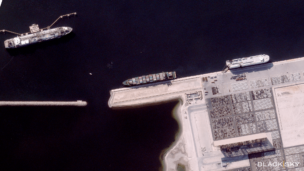The president wants a Golden Dome missile defense system, and the space industry is standing ready to get him one.
Booz Allen Hamilton is the latest space firm to publish a concept for a distributed satellite system that could identify and help to intercept missile attacks in their tracks. The constellation design, which the company is calling “Brilliant Swarms,” would use 1,000–2,000 satellites to identify and take down incoming missiles before they reach their targets—or even the top of their trajectory.
Taking inspo: The Golden Dome, FKA the Iron Dome for America, is a Trump initiative to establish a comprehensive, global tracking and interception capability for ballistic and hypersonic missiles, as well as drones and other physical threats.
Brilliant Swarms also takes a leaf from Ukraine’s book—specifically, the GIS Arta defense system, which pulls information from across the country’s intelligence infrastructure and coordinates with artillery to organize defensive action.
“Now imagine this capability in space, where a constellation of satellites is tracking a missile that was just launched and then autonomously, in real time, selects the most effective satellites in the constellation to swarm on the launched missile and then become hit-to-kill vehicles,” Chris Bogdan, Booz Allen EVP and space business head, said on a press call.
The constellation plans:
- 1,000-2,000 satellites, organized into 20 orbital planes between 300–600 km altitude
- Launching up to 100 satellites at a time
- Initial deployment in three years, with full deployment in five to seven years
Booz Allen says it has already pitched its architecture to the Missile Defense Agency (MDA).
A competition arises: Booz Allen isn’t the only company to come out with a solution that could meet the DoD’s wishlist for an additional distributed missile defense system to support the Golden Dome.
- L3Harris ($LHX) announced plans earlier this month to leverage its partnerships with Palantir and Shield AI to enhance the products it delivers to the Space Development Agency (SDA) and MDA.
Booz Allen says that Brilliant Swarms wouldn’t be a competitor to the SDA’s flagship system, the Proliferated Warfighter Space Architecture—instead, it would offer complementary capabilities and enhanced readiness.
“It’s important to feed into the overall system, especially for the ground-based interceptors and the other layers of the missile defense system,” Bogdan said.




